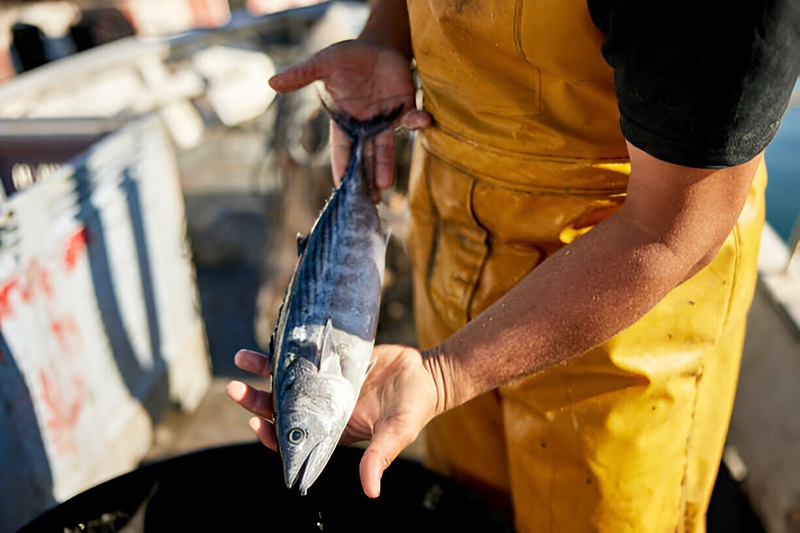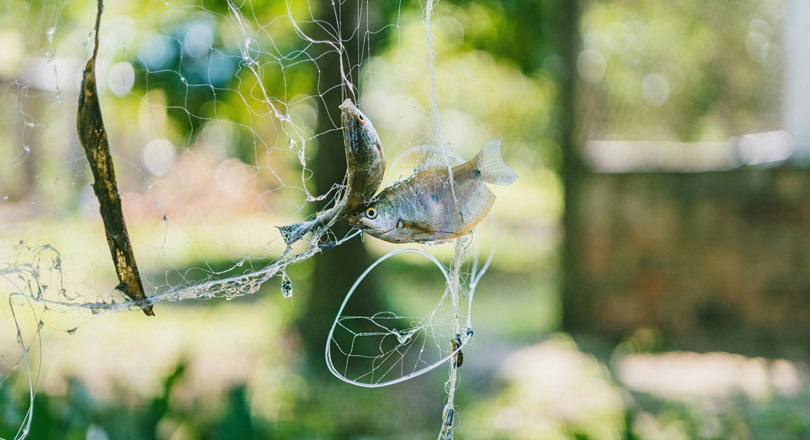Last Updated on February 28, 2025
Fishes are aquatic vertebrates with gills, fins, and scales. They inhabit diverse water environments worldwide.
Fishes exhibit an incredible diversity, ranging from tiny species to massive ones. These aquatic creatures play crucial roles in ecosystems, maintaining life. They have evolved unique adaptations to survive in various environments, from freshwater rivers to deep ocean trenches.
Fishes use their gills to extract oxygen from water, and respiration. Their fins provide stability and maneuverability, while scales offer protection. Human activities, such as overfishing and pollution, threaten many fish species. Conservation efforts are essential to preserve fish biodiversity and ensure the health of aquatic ecosystems. Understanding the nature of fishes helps us appreciate their importance and the need to protect them.

Diving Into The Depths: Fish Diversity
The underwater world boasts a stunning variety of fish. Each species offers unique beauty and traits. Let’s explore the vivid colors, intricate patterns, and species richness that make fish so fascinating.
Colors And Patterns
Fish come in every color imaginable. Some fish have stripes, others have spots. These patterns help them blend in or stand out.
Bright colors can attract mates or warn predators. Patterns can be a form of camouflage. Fish use their colors and patterns for survival.
Species Richness
There are over 30,000 species of fish. Each species has its habitat and behavior.
- Freshwater Fish: Live in rivers and lakes.
- Saltwater Fish: Thrive in oceans and seas.
- Brackish Fish: Found in both fresh and saltwater.
Some fish are tiny, like the dwarf goby. Others are massive, like the whale shark. Fish diversity is immense and awe-inspiring.
Adaptations For Aquatic Life
Fishes have fascinating adaptations that help them thrive underwater. Their bodies and systems are specially designed for aquatic life. Let’s dive into how fishes breathe and move in water.
Respiratory Systems
Fishes use gills to breathe underwater. Gills are feathery organs located on the sides of their heads. Water enters through the mouth and flows over the gills. The gills extract oxygen from the water and release carbon dioxide. This process is vital for fish survival.
Some fishes have a special adaptation called a swim bladder. The swim bladder helps them stay at different depths without using much energy. It also aids in buoyancy and makes breathing easier.
Swimming Mechanisms
Fishes have streamlined bodies that reduce water resistance. Their bodies are covered in scales that help them glide smoothly. The muscles along their bodies contract and relax, creating movement.
Fishes use their fins to swim. Different fins have different roles. The caudal fin (tail fin) helps with speed and direction. Pectoral fins assist in steering and stability. Dorsal and anal fins provide balance and prevent rolling.
Here’s a simple table to understand the fins better:
| Fin Type | Function |
|---|---|
| Caudal Fin | Speed and Direction |
| Pectoral Fins | Steering and Stability |
| Dorsal Fin | Balance |
| Anal Fin | Prevents Rolling |
Fishes also have a lateral line system. This system detects vibrations and pressure changes in water. It helps them sense danger and find food.
With these amazing adaptations, fishes can live and thrive in their underwater world.
Social Behaviors And Communication
The underwater world of fish is full of fascinating social behaviors. Fish use various ways to communicate with each other. Their interactions help them survive, find food, and reproduce. This section explores how fish communicate and behave socially.
Schooling
Schooling is a social behavior seen in many fish species. Fish form large groups to swim together. This helps them avoid predators and find food. The synchronized movement of a school confuses predators. It is harder to target a single fish.
| Benefits of Schooling | Details |
|---|---|
| Protection | Safety in numbers reduces predator attacks. |
| Feeding | Schools locate food sources more efficiently. |
| Reproduction | Schools increase chances of finding a mate. |
Sound And Vibrations
Fish often use sound and vibrations to communicate. They produce sounds by moving their bodies or using special organs. These sounds help them send messages to other fish.
Fish can detect vibrations in the water. They have a special line of sensory organs along their bodies. This is called the lateral line system. It helps them sense movement and vibrations.
- Sending warnings
- Finding mates
- Locating prey
Some fish even create distinct sounds during courtship. These sounds attract females and help in mating.
Reproductive Strategies
Fishes exhibit a fascinating array of reproductive strategies. These strategies ensure the survival of their species. They vary greatly among different fish species. Below, we explore some of these strategies in detail.
Spawning Rituals
Spawning is a key part of fish reproduction. Many fish have unique spawning rituals. Some fish migrate long distances to spawn. Others choose specific locations.
For example, salmon travel upstream to their birthplace. They lay eggs in the riverbed gravel. Tropical fish often choose coral reefs. These areas provide safety for their eggs.
Fish like cod release eggs into open water. The eggs float and disperse widely. This increases the chances of survival.
Parental Care
Some fish exhibit parental care for their offspring. This care can vary from guarding eggs to feeding young fish.
| Species | Parental Care |
|---|---|
| Clownfish | Guard their eggs until they hatch |
| Seahorses | Males carry eggs in a pouch |
| Catfish | Some species incubate eggs in their mouth |
Male seahorses are unique. They carry eggs in a special pouch. The eggs hatch inside the pouch. The male then releases the young seahorses.
Some catfish incubate eggs in their mouths. This protects the eggs from predators. The eggs stay safe until they hatch.
In summary, fish have diverse reproductive strategies. These strategies ensure the survival of their young. From spawning rituals to parental care, fish display remarkable behaviors.
Conservation Challenges
Fishes face many challenges. These challenges impact their survival. Two major issues are habitat loss and overfishing. Both threaten fish populations worldwide.
Habitat Loss
Habitat loss is a serious problem. Many fish live in coral reefs. Coral reefs are disappearing fast.
Rivers and lakes also face pollution. Pollution kills fish and destroys their homes. Dams block fish migration paths. Fish cannot reach breeding areas.
| Cause | Impact |
|---|---|
| Pollution | Water becomes toxic for fishes. |
| Dams | Blocks fish migration routes. |
| Deforestation | Leads to sediment in water bodies. |

Overfishing
Overfishing is another big issue. Many fish species are overfished. This leads to declining fish populations.
Fishing methods can harm habitats. Bottom trawling damages the ocean floor. It also catches non-target species.
- Bycatch: Non-target species are caught and killed.
- Destructive Methods: Damage to the ocean floor and coral reefs.
- Illegal Fishing: Leads to over-exploitation of fish stocks.
Protecting fish is crucial. We must address habitat loss and overfishing. Only then can we ensure their survival.
Frequently Asked Questions
What Are The 7 Main Characteristics Of Fish?
Fish have seven main characteristics: gills for breathing, fins for movement, scales for protection, a streamlined body, a cold-blooded nature, a lateral line for sensing vibrations, and aquatic habitats.
What Are 3 Special Characteristics Of Fish?
Fish have gills for breathing underwater. They possess scales for protection. Most fish have fins for swimming.
What 4 Characteristics Define A Fish?
Fish have four defining characteristics: gills for breathing, fins for swimming, scales covering their bodies, and a streamlined shape for efficient movement in water.
How Are Fish Described?
Fish are aquatic creatures with gills, fins, and scales. They live in oceans, rivers, and lakes. Fish vary in size, color, and species.
What Do Fish Eat?
Fish eat algae, insects, and smaller fish. Their diet varies by species and habitat.
How Do Fish Breathe Underwater?
Fish breathe underwater using gills. Gills extract oxygen from water, allowing fish to survive underwater.
Conclusion
The nature of fishes reveals their incredible diversity and adaptability. Their behaviors, habitats, and survival strategies are fascinating. By studying fish, we gain insights into aquatic ecosystems. Protecting these creatures is crucial for maintaining ecological balance. Dive deeper into the world of fishes, and you’ll uncover the wonders of underwater life.

